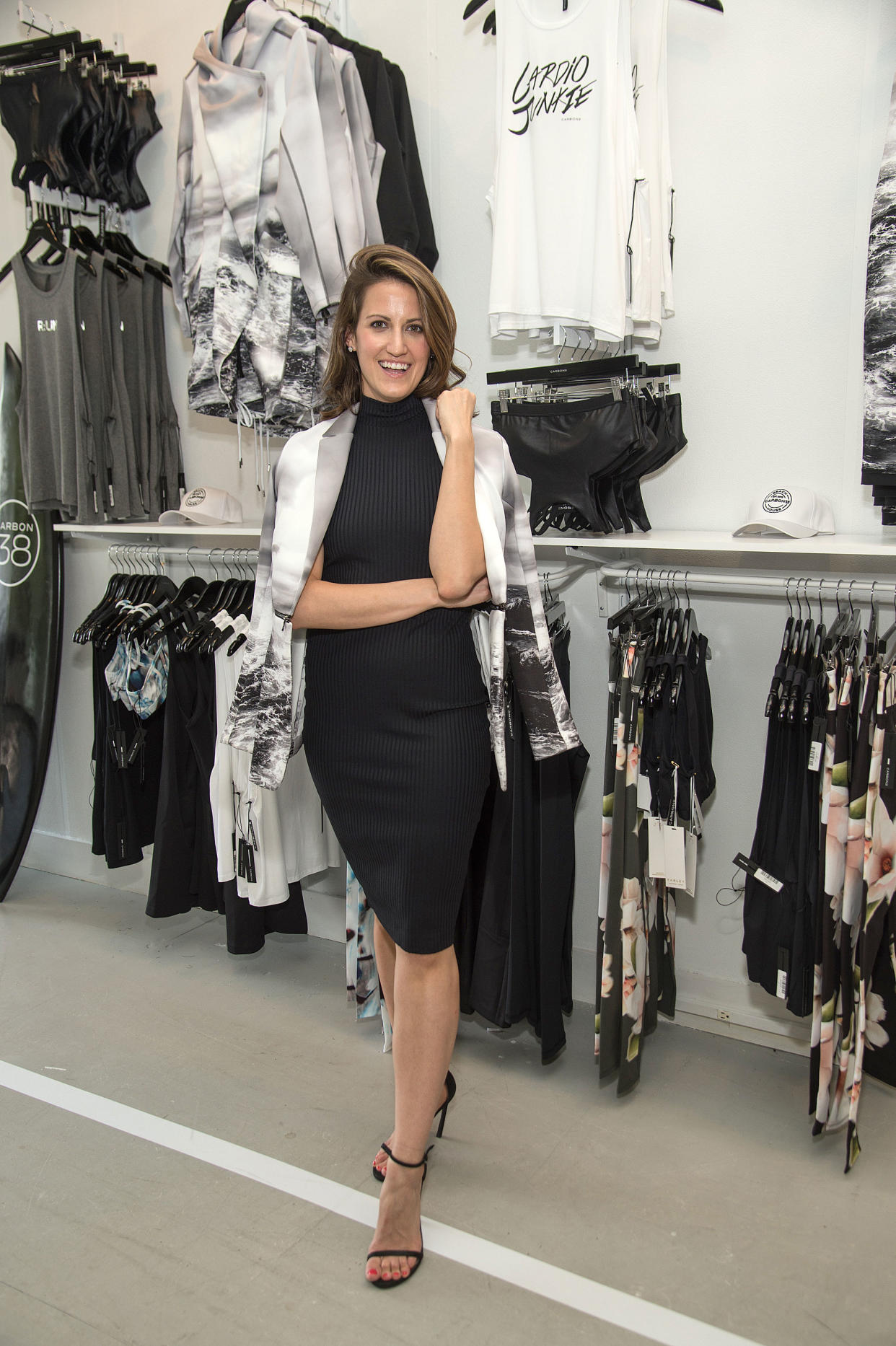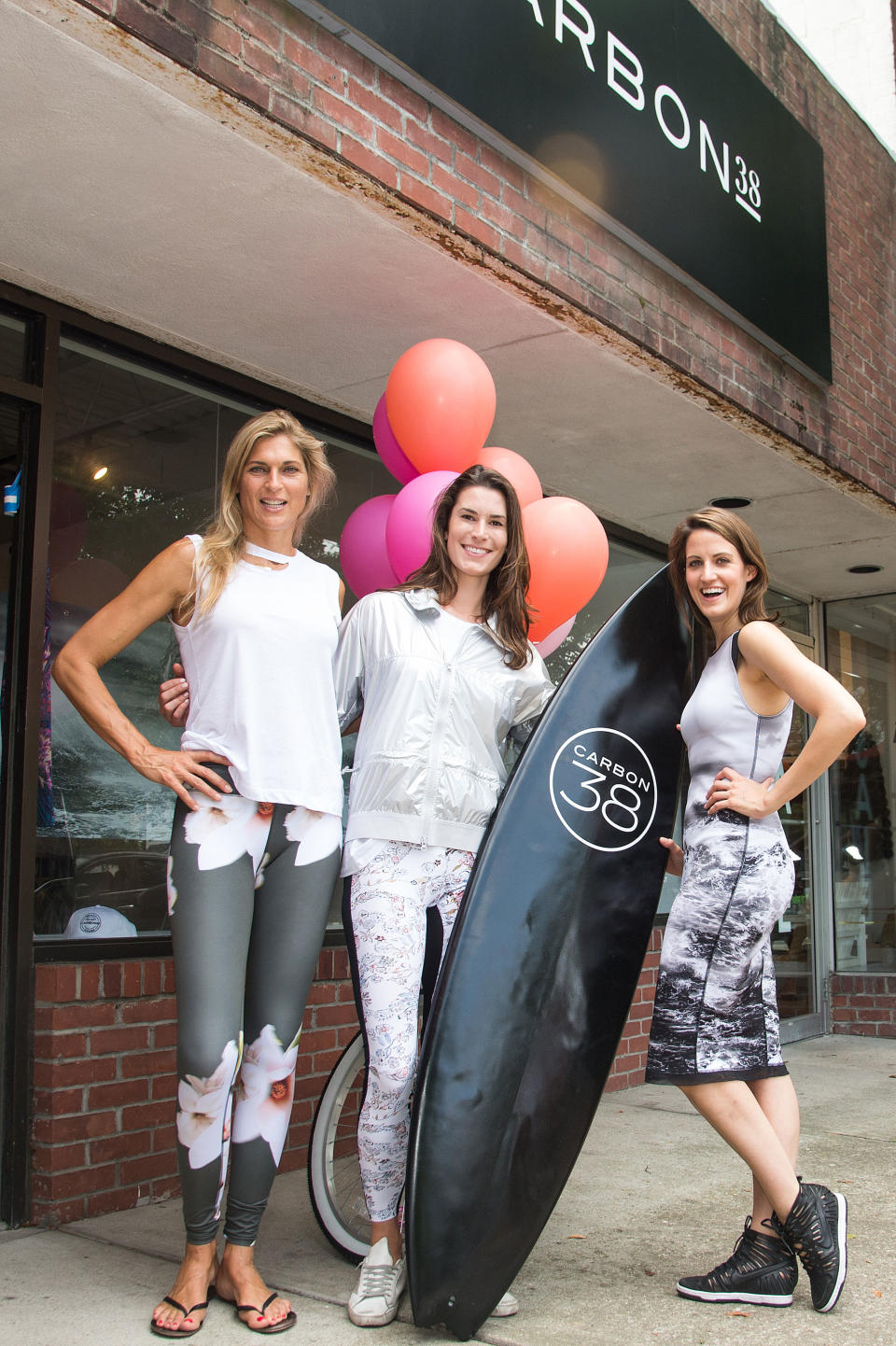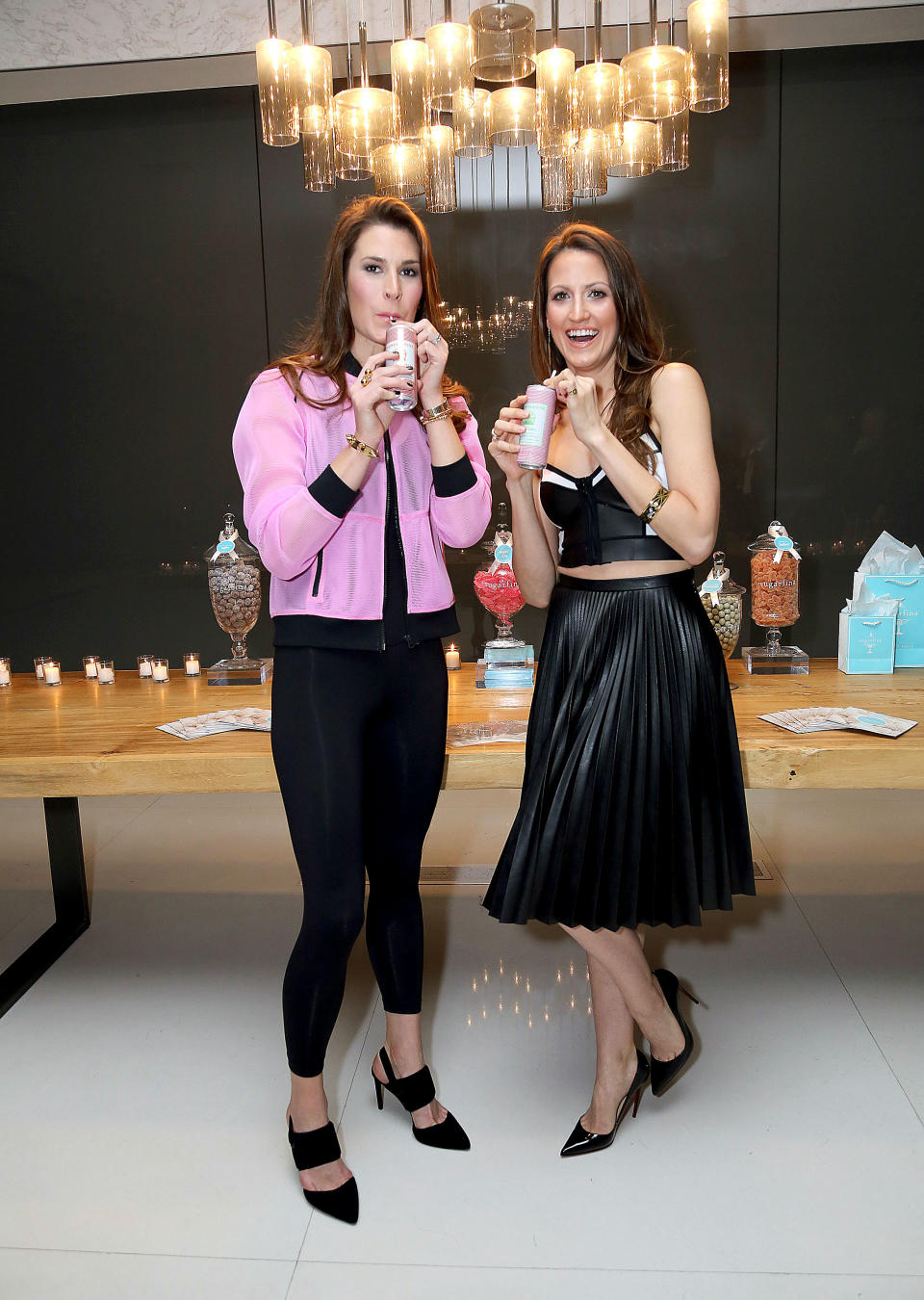How I Started Activewear Company Carbon 38


Katie Warner Johnson has never shied away from all-consuming projects. As a kid, she spent hours training at the ballet barre, forgoing a social life to dance professionally by the time she was in her teens. She would go on to study at Harvard, intern on Wall Street, and spend several years working as a fitness trainer, counting celebrities like Emmy Rossum and Demi Moore as clients. But she didn’t feel fulfilled until she and another former ballerina, Caroline Gogolak, walked away from successful careers in order to create Carbon38, which Katie describes as the Net-A-Porter of activewear.
Today, Carbon38 sells over 175 brands and has raised over $1 million in equity funding, putting it on the map as one of the premiere e-commerce sites for activewear. Here, the dancer-turned-trainer-turned-CEO explains how she started her own company and why she's OK with not having work/life balance.
Growing up, my life was ballet. I danced with the Maryland Youth Ballet and joined the American Guild of Musical Artists - the union that represents opera singers and ballet dancers - when I was 16, but I was dancing professionally even before that. I think there’s something interesting about ballet: It’s one of the hardest sports, because not only do you have to excel technically, but you have to look beautiful. As a young kid, I learned not only about commitment and discipline, but also about being an artist and telling stories.
I remember a very pivotal moment in my “career,” when I was 15 years old and I was chosen to be a part of a piece by Eric Hampton, who was a really well-known choreographer in D.C. It was the last piece that he choreographed because he was dying of ALS. I was responsible not just for kicking my legs high and landing perfect pirouettes, but to tell this man’s story. As I grew up, I searched for that feeling again - of being part of something so much bigger than myself.
I had to take a step back from ballet when I got to college, because I tore a tendon in my foot. One day, in the dining hall, I saw a girl I recognized. Caroline Gogolak and I had danced together in a summer program at the Miami City Ballet when we were 15. We’re both really tall, and in class, you stand tallest to shortest at the ballet barre, so we were always standing next to each other. When she walked into the dining hall, I was like, “I know you!” She would go on to co-found Carbon38 with me but I didn’t know it then.

When I graduated, I had an offer to work as an analyst for Deutsche Bank, but I deferred it in order to keep dancing professionally in New York. I did a couple more shows and a couple more tours, but it’s so hard to live in New York on a dancer’s salary, so I picked up a part-time job as a fitness instructor to pay the bills. This was in 2007, which is right before the boutique fitness studio market took off. Then in 2008, when my friends on Wall Street were losing their jobs, I started noticing my classes filling up with these women who had more time on their hands. I had an opportunity to move to L.A. and start working for Physique 57, so I moved out West to do that. I was doing really well but I wasn’t totally satisfied.
[In 2011,] I was thinking of applying to business school to learn the skills to start my own project when I got a call from Caroline, who was also feeling like making a change [from her finance career]. We decided to attend the Women 2.0 Startup Weekend in San Francisco. You meet up with developers, designers, marketers, and so on to go from idea to iteration in 54 hours. We really were thinking that this would make a good application essay to MBA programs, not that we wanted to start a company in earnest.
We ended up coming up with the idea for a product that was sort of like Classpass. We presented a really low-tech demo and ended up winning a prize. As a result, we got some exposure to a few venture capitalists and to a bunch of accelerator programs. We dropped the idea of going to business school, and decided instead to go ahead and apply to a couple accelerator programs with this demo. We ended up getting into one in L.A. called Start Engine.
We took the three months and $30,000 that [the accelerator program] gave us to really step back and study our customer. It’s essentially the exact same customer I’ve known since 2007, when I became a fitness instructor - the kind of woman who’s juggling a lot of different responsibilities, but cares about looking good and feeling good in her life. We pivoted to create a product that was sort of like Pinterest for booking fitness classes - you could share which classes you were attending with a network of friends. When that didn’t seem right, we came up with the idea for a website that basically sold anything you’d find in your gym bag: fitness classes and juice cleanses and skin-care products and athletic wear. [Using focus groups,] we found that our customer was really drawn to the activewear and realized we needed to focus on that.
The beauty of being a young company with only a couple people in the room is that you can pivot a lot. You can decide the next day, “This isn’t working. Why don’t we try that?” I took that fail-fast mentality very seriously. We launched a bunch of stuff to see what stuck and what didn’t, which is how we ended up with the company we have today.
We raised some capital around this idea of a multi-brand activewear retailer and officially launched in November 2013. At the time, not a lot of designers were producing activewear. Nike and Lululemon were the big players, but we wanted to give a platform for these emerging indie brands like Onzie and MICHI. They jumped at the opportunity, because they needed distribution. It was a win-win for both of us. We’d buy their clothes wholesale and then sell it at a markup, like a traditional retail model.

Before we launched, we were working out of my dumpy townhouse in L.A., with all of the inventory strewn around my dining room. We had desks set up in the kitchen. We did our own photo shoots in my kitchen, usually with me or my fitness instructor friends modeling the clothes. We didn’t pay ourselves for many, many months, so to pay my rent, I was still teaching fitness classes. I’d teach three classes in the morning, from 5 a.m. until 10 a.m., and then I’d go to work on Carbon38 at 10:30 a.m.
When the site went live, I was so stressed. Caroline and I went down the street to a restaurant and split a bottle of wine. When we came back, we had four orders. I’ve never felt so rich. And as soon as those first orders came in, I knew we were going to be fine - not because four sales is particularly good, but because it showed that four strangers believed in our idea. I think about that moment a lot, when things start to feel overwhelming, because I felt so sure that everything was going to be OK.
After our launch, we raised another round of funding. At first, we first tried the traditional venture capital route, which usually requires you to give someone a board seat and change the way your business is run. We needed money, but right off the bat, it didn’t feel like a great fit. So we tried reaching out to very specific, early-stage VC firms, who wrote smaller checks, but who believed in our business - whether it was the brand side, next generation e-commerce, or the female-founded business. I found people who backed up the vision.
With the money we raised, we hired a few more employees and ended up moving into a warehouse in Burbank. There were cockroaches everywhere, but it had an open bay in the back where we could do photo shoots and more space to hold inventory. When we outgrew that space, we found an old accountant’s office and moved in there. We created this big open plan, which is where we are today. We have 34 employees now. It’s a little cramped, so we’re going to have to move again soon.
A few years ago, I was driving from an investor meeting to a factory meeting and I realized that I’d finally recaptured that feeling of being part of something bigger. I truly believe that at Carbon38, we’re dressing the modern American woman - a woman who’s balancing the demands of being a boss and a mother and a friend. [People] talk about fashion as being frivolous, but I don’t think so. We want to dress our customer in clothes that can take her from the gym to the board meeting to dropping kids off at school to going out to dinner. It’s all activewear, but for beyond just the hour you spend at the gym. Our most recent collaboration is with Jonathan Simkhai, which we launched in January. He’s designed gorgeous cocktail dresses, but he came to us wanting to reach a new customer and to create this formalwear-inspired activewear.
We just hit our graduation ceremony from phase 1 to phase 2. That’s startup lingo, but basically: Phase 1 is all about fumbling around in the dark and getting stuff done with no order, just hanging by the skin of your teeth. Phase 2, which we’re in now, is about building and scaling a business. We’ve expanded our team in the last six months and I’m really proud of the people who work here. One day, we might move from online-only to having a physical retail presence - who knows. You can’t take anything off the table if you’re focused on growing to meet your customer’s needs.
There’s this Randi Zuckerberg quote about the entrepreneur’s dilemma: “work, sleep, family, fitness, or friends - pick three.” I think that’s about right. For me, I only really think about my business and myself. I have a bedtime alarm and I make sure to take care of my body because I know, as a CEO, I’m like an athlete - I have to be firing on all cylinders. I don’t really have a life outside of work. I don’t take vacations. People talk about work/life balance, but for me, it’s about feeling fulfilled every day when I leave work and feeling excited every morning to go to work. I’ve made sacrifices, but the reward is greater in my mind.
Get That Life is a weekly series that reveals how successful, talented, creative women got to where they are now. Check back each Monday for the latest interview.
Follow Heather on Twitter.
You Might Also Like

